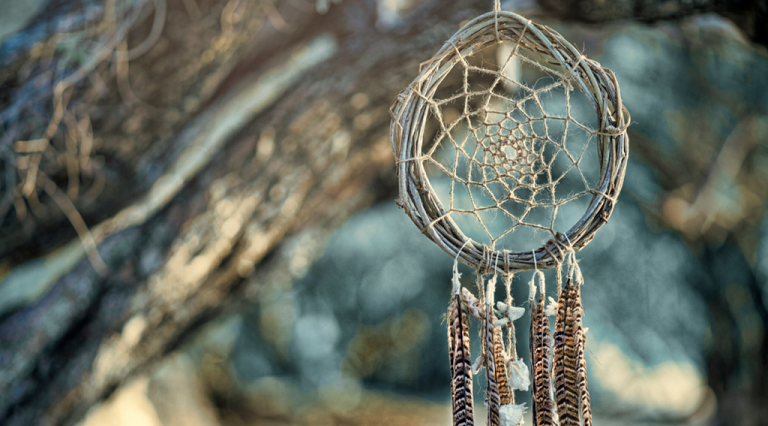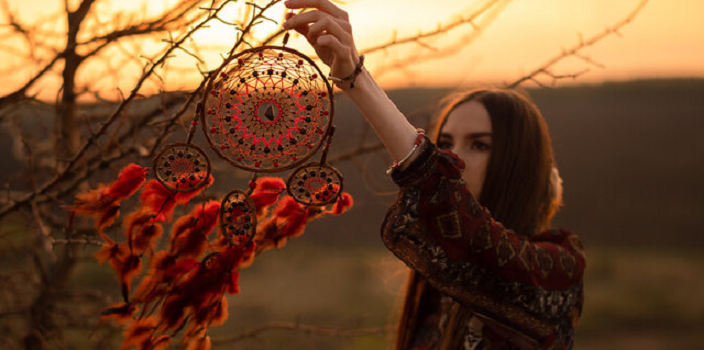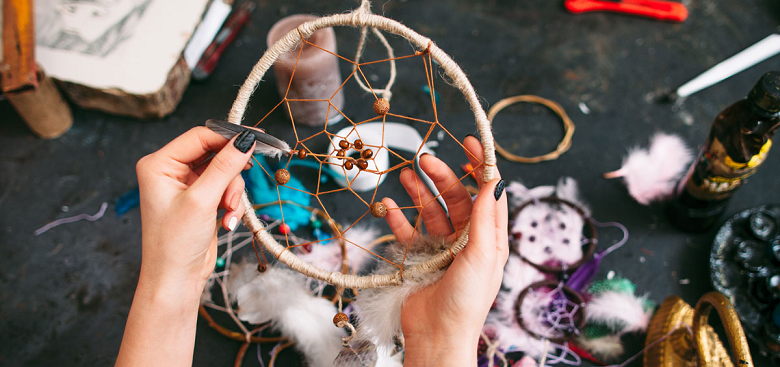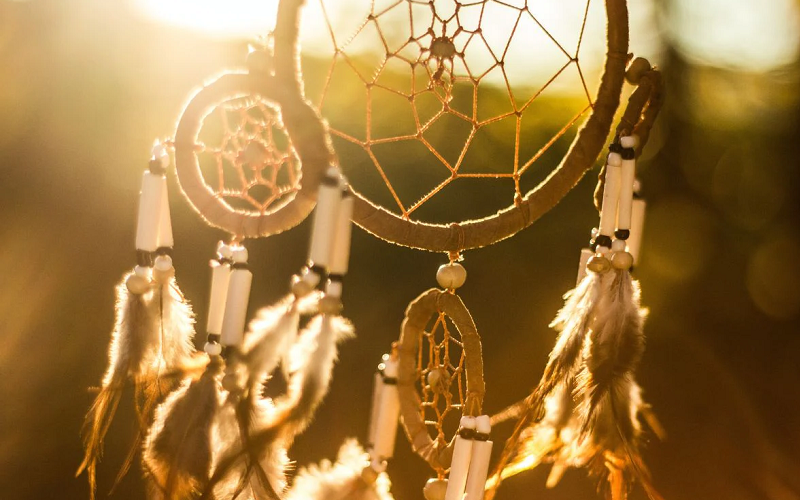Dreamcatchers have captured the imagination of people around the world for generations. Originally created by the Ojibwe tribe of Native Americans, dreamcatchers have become a symbol of protection, spiritual significance, and cultural preservation. Here we explore the history and evolution of dreamcatchers, as well as their cultural significance and how they have been adapted and embraced by people of different backgrounds.
What Are Dreamcatchers?
Dreamcatchers are handmade objects originating from Native American culture, typically consisting of a circular frame woven from branches and decorated with feathers, beads, and other materials. They are said to filter out bad dreams and allow only good dreams to reach the sleeper by trapping negative dreams in the web and allowing positive dreams to pass through to the feathers. They are also seen as a spiritual symbol of protection and good luck. Dreamcatchers are now popular globally as a decorative item and are often hung in bedrooms or other spaces for their aesthetic appeal and cultural significance.
The Origins of Dreamcatchers
The origins of dreamcatchers can be traced back to the Native American culture, particularly the Ojibwe tribe. The story goes that a spiritual leader of the tribe, known as Asibikaashi, was concerned about the well-being and dreams of her people. She created the first dreamcatcher as a tool to protect them while they slept and filter their dreams.
The circular shape of the dreamcatcher represents the circle of life and the web within symbolizes the connection between the physical and spiritual world. The feathers hanging from the bottom were believed to represent the breath of life, with the good dreams sliding down the feathers to reach the sleeper. In this way, the dreamcatcher served as a protective charm to keep the sleeper safe and bring them positive energy.
Over time, dreamcatchers became a popular tradition among many Native American tribes, each with their own unique variations and interpretations, and eventually spread beyond the Native American culture to be embraced by people all over the world.

The Significance of Dreamcatchers
Dreamcatchers hold great cultural and spiritual significance, serving as a symbol of protection, good luck, and cultural preservation. As mentioned earlier, the primary purpose of dreamcatchers is to filter out bad dreams and allow only good dreams to reach the sleeper. This not only provides physical protection during sleep, but also promotes mental and emotional well-being.
Dreamcatchers have deep spiritual symbolism, representing the connection between the physical and spiritual world and reminding us of the power of dreams. They are seen as a powerful tool for personal growth and self-discovery, helping us to better understand our own thoughts and emotions. Beyond their personal significance, dreamcatchers also play a role in preserving Native American culture and heritage.
By creating and sharing dreamcatchers, Native American communities continue to pass down traditional beliefs and practices, keeping their cultural identity alive and thriving. The widespread popularity of dreamcatchers also serves as a reminder of the rich cultural heritage of Native American communities and helps to raise awareness and understanding of their traditions and beliefs.

The Evolution of Dreamcatchers
Dreamcatchers have undergone a significant evolution since their origins in Native American culture. Originally created with natural materials such as willow branches, feathers, and beads, dreamcatchers have now been adapted and interpreted in a variety of modern forms.
For example, some people now make dreamcatchers with metal or plastic frames, incorporating different types of materials and designs. This has led to a wider range of styles and designs, each with its own unique meaning and symbolism. Despite these changes, the core purpose of dreamcatchers as a tool for filtering dreams and providing spiritual protection remains unchanged.
The popularity of dreamcatchers has also spread beyond Native American communities, with people of all cultures and backgrounds embracing the tradition and incorporating dreamcatchers into their own personal beliefs and practices. This global appeal of dreamcatchers is a testament to the timeless significance and cultural impact of this fascinating tradition.
Modern Interpretations
Modern interpretations of dreamcatchers have taken on new forms and meanings, reflecting the diverse and changing world we live in. Today, dreamcatchers are not only seen as a tool for filtering dreams, but also as a decorative item with a wide range of styles and designs.
Many people now use dreamcatchers as a symbol of hope, positivity, and good energy, hanging them in their homes or workplaces as a reminder of their beliefs and aspirations. Dreamcatchers have also been incorporated into various forms of popular culture, including fashion, music, and art, further spreading their influence and appeal. Despite these changes, the core cultural significance and spiritual symbolism of dreamcatchers remain largely unchanged, serving as a powerful connection to the rich traditions and beliefs of Native American culture.

Variations in Design
Although traditional dreamcatchers often had a specific design, incorporating natural materials such as willow branches, feathers, and beads, modern dreamcatchers can vary greatly in their appearance and materials used. For example, some dreamcatchers are now made with metal or plastic frames, while others incorporate different types of feathers, beads, and other materials into their designs.
The size and shape of dreamcatchers can vary greatly, with some being large and intricate while others are smaller and more simple in design. These variations in design allow people to personalize their dreamcatchers, creating a unique and meaningful item that reflects their own beliefs, values, and aspirations. As dreamcatchers continue to evolve and be adapted by people of different backgrounds and cultures, they remain a vibrant and meaningful symbol of hope, protection, and spiritual connection.
The Global Appeal of Dreamcatchers
The global appeal of dreamcatchers is a testament to their cultural significance and timeless appeal. Although dreamcatchers originated in Native American culture, they have been embraced by people all over the world, each finding their own personal meaning and significance in this fascinating tradition.
Dreamcatchers have become popular not only as a tool for filtering dreams and providing spiritual protection, but also as a decorative item and symbol of hope, positivity, and good energy. Their popularity has been further fueled by the widespread availability of dreamcatchers in various styles and designs, as well as their incorporation into popular culture, including fashion, music, and art.
People from all walks of life and cultures are drawn to the beauty and symbolism of dreamcatchers, finding a connection to their own beliefs, values, and aspirations. Through their global appeal, dreamcatchers serve to raise awareness and understanding of Native American culture and heritage, as well as to connect people across cultures and backgrounds in a shared celebration of hope and spirituality.

